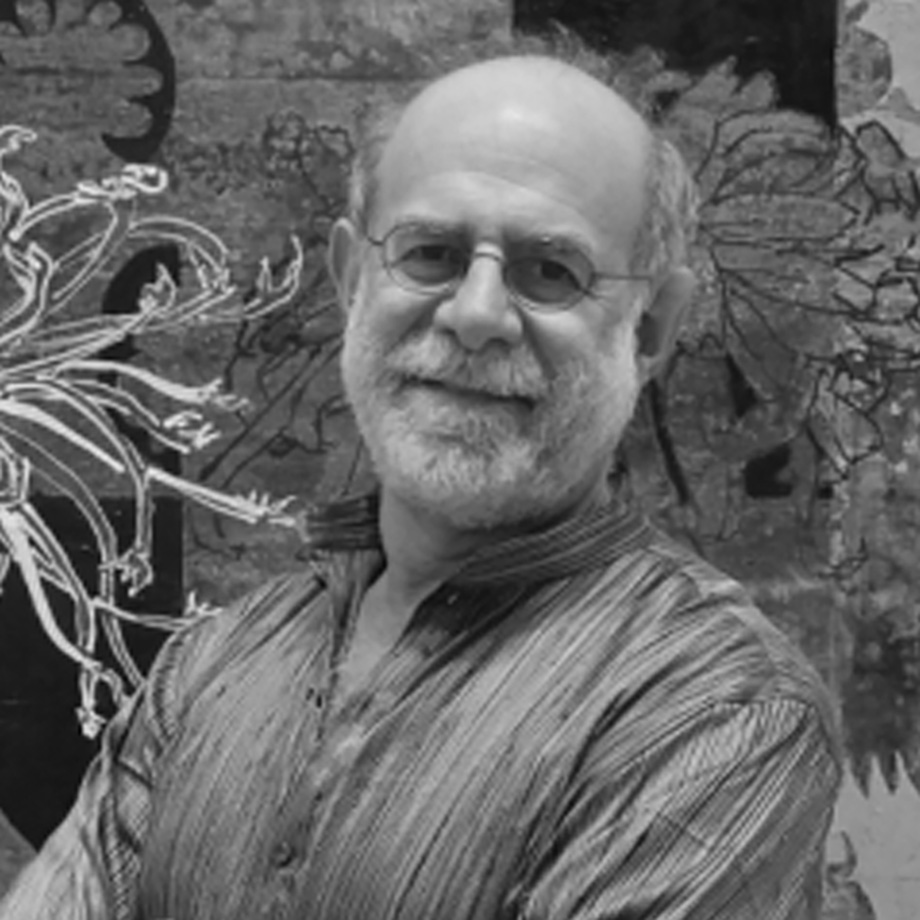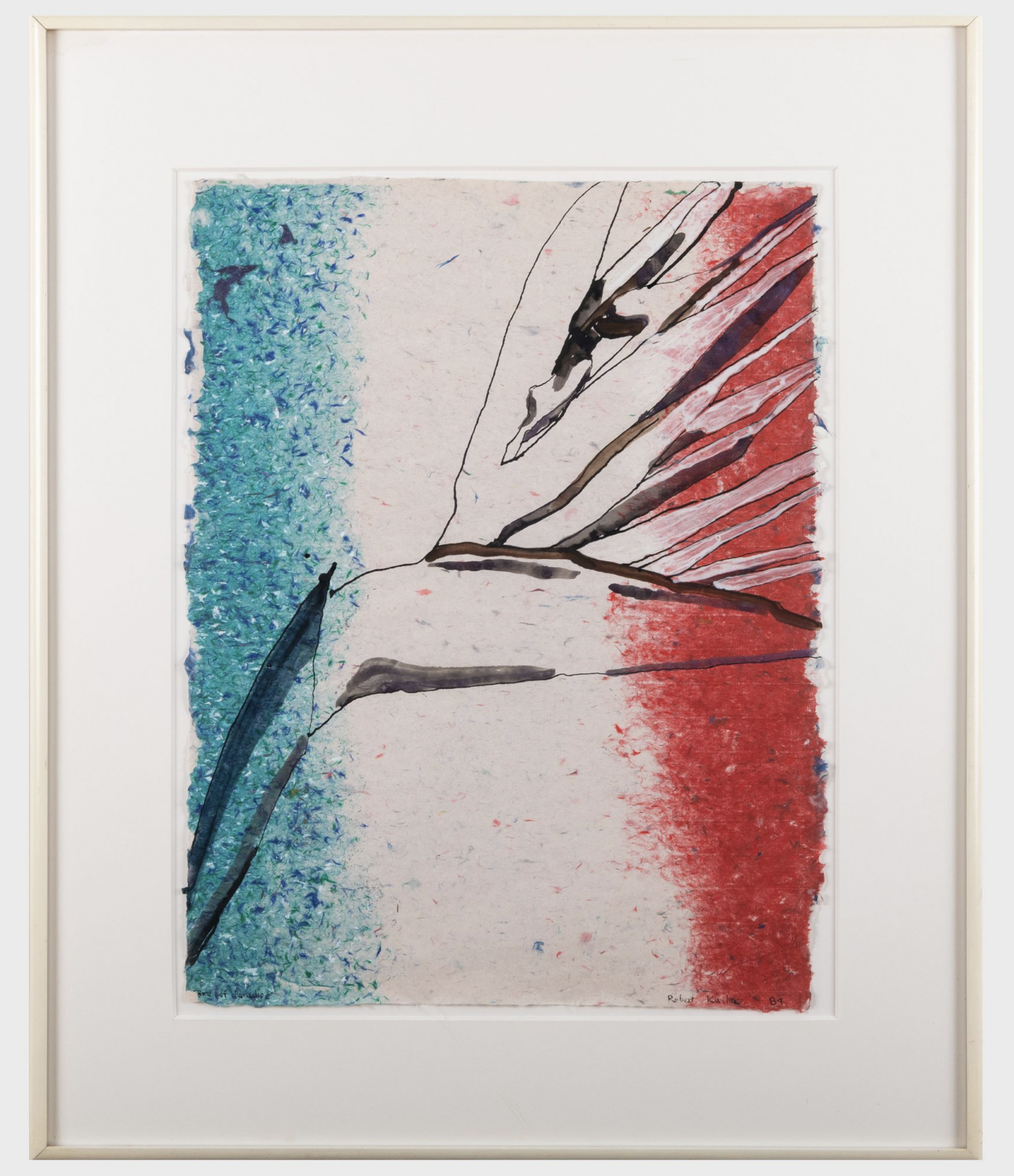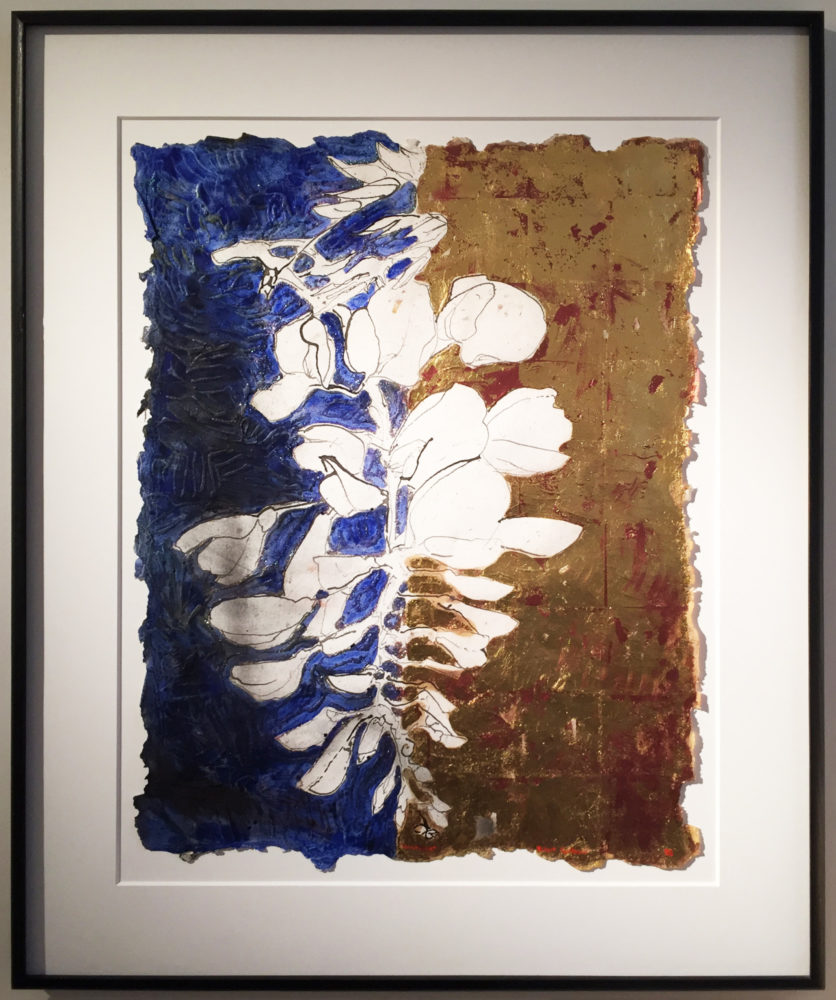
Robert Kushner
Since participating in the early years of the Pattern and Decoration Movement in the 1970s, Robert Kushner has continued to address controversial issues involving decoration.
Biography
Since participating in the early years of the Pattern and Decoration Movement in the 1970s, Robert Kushner has continued to address controversial issues involving decoration. Kushner draws from a unique range of influences, including Islamic and European textiles, Henri Matisse, Georgia O’Keeffe, Charles Demuth, Pierre Bonnard, Tawaraya Sotatsu, Ito Jakuchu, Qi Baishi, and Wu Changshuo. Kushner’s work combines organic representational elements with abstracted geometric forms in a way that is both decorative and modernist. He has said, “I never get tired of pursuing new ideas in the realm of ornamentation. Decoration, an abjectly pejorative dismissal for many, is a very big, somewhat defiant declaration for me. … The eye can wander, the mind think unencumbered through visual realms that are expansively and emotionally rich. Decoration has always had its own agenda, the sincere and unabashed offering of pleasure and solace.”
Robert Kushner‘s newest work presents some striking departures and some reiterations of themes that have been integral to his work for decades. The most visible introduction is a bold use of geometricized patterns that swirl through the backgrounds of his new floral compositions, echoing, amplifying and sometimes even undermining the rhythms of the more naturally drawn floral elements. Most of these patterns are derived from traditional tribal embroideries from Uzbekistan. Uzbekistan is nearly in the middle of the ancient trade routes joining East and West that we collectively refer to as the Silk Route. For several thousand years, goods and ideas from the Orient have made their way Westward while ideas, materials and concepts from the West have traveled eastward along these caravan paths.
In some ways, this use of pattern refers back to some of his early experiments from the 1970s combining geometric pattern with floral and figurative elements. However, he now utilizes a full spectrum of color, gold, silver and patinated copper leaf and a fracturing of the patterns to create paintings that are both complex and exciting to decode. Robert Kushner has continually addressed controversial and often subversive issues involving the interaction of decoration and art and has been considered one of the founders of the Pattern and Decoration movement . In this new body of work Robert Kushner’s paintings remain overtly beautiful and unapologetically opulent. His exotic and unique color sense has become even broader within this new series, the emotional range varies from somber and contemplative to exuberant and celebratory.
Robert Kushner’s work has been exhibited extensively in the United States, Europe and Japan since 1975 when one of his paintings was included in the Whitney Biennial. In 1984, Robert Kushner was the subject of one-person exhibitions at both the Whitney Museum, and the Brooklyn Museum, and in 1987, a mid-career summary of his work was organized by the Philadelphia Institute of Contemporary Art.
A monograph on Robert Kushner’s three decades of artistic work, entitled Gardens of Earthly Delights, with text by Alexandra Anderson-Spivy and Holland Cotter, was published by Hudson Hills Press in 1997. A compilation of Kushner’s recent paintings on Japanese screens as well as canvas, written by Michael Duncan, was published by Pomegranate in 2006.
In 2004, Robert Kushner installed two monumental mosaic murals, 4 Seasons Seasoned, at the 77th Street and Lexington Avenue subway station. In 2010, an 80 foot long marble mosaic, Welcome, was installed at the new Raleigh Durham International Airport in North Carolina.
Robert Kushner’s works are in the permanent collections of museums around the world: The Museum of Modern Art, The Metropolitan Museum of Art, The Whitney Museum of American Art, The National Gallery of Art, The Corcoran Gallery of Art, Tate Gallery, London, San Francisco Museum of Modern Art, The Contemporary Museum, Honolulu, The Denver Art Museum, Galleria degli Ufizzi, Florence, J. Paul Getty Trust, Los Angeles, Museum Ludwig, St. Petersburg, and The Philadelphia Museum of Art.

